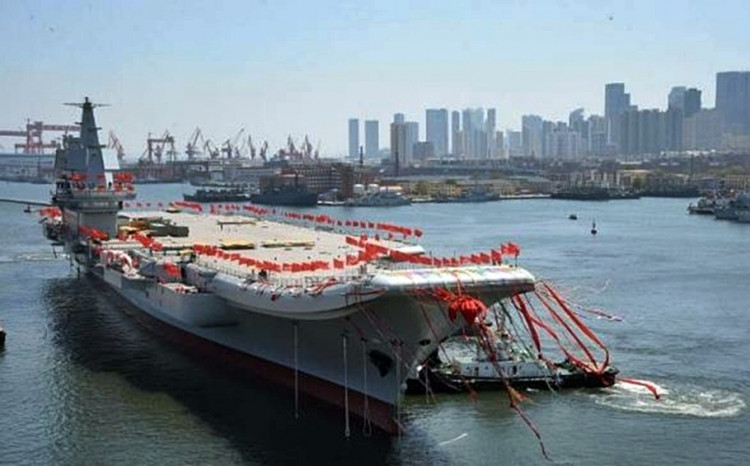The People Liberation Army Navy's (PLAN) second aircraft carrier -- which will probably be named the CNS Shandong (CV-17) -- is now ready for her second sea trial.
PLAN announced the outfitting of China's first domestically built aircraft carrier, classified as the Type 001A, was completed last week, making the carrier ready for her second sea trial. The carrier's first sea trial took place from May 13 to 18 and was considered successful. She returned on May 23 to the Dalian Shipyard in Liaoning Province to finish outfitting.
Chinese state-run media said the carrier's deck "doesn't show any big changes, and the outfitting work is primarily for inspection and maintenance. After the first sea trial, the ship's instruments collected data and information, so its equipment must be adjusted based on the data."
This means the carrier can be delivered to the PLAN as soon as possible. CNS Shandong was launched on April 26, 2017, but will have to contend with unsolved operational issues when it's commissioned into the PLAN. One of these issues, said the Russians, is Shandong's unsuitability for blue-water operations, or long-range operations into the rough Pacific Ocean far from China.
Russian state-controlled media last year claimed Shandong is only suitable for coastal patrol missions near the shores of mainland China. The carrier is, therefore, unsuitable for long-distance, blue-water patrols into the Pacific Ocean and other distant waters where the U.S. Navy enjoys superiority.
The Russians also said that "without Russian engineering, the vessel would never have been built." They emphasized their key contributions to building the Shandong. Among these are the critical engineering and design concepts that give this warship a certain "Russianness."
The Russians noted that China's first aircraft carrier, CNS Liaoning (CV-16), began life as the aircraft carrying heavy cruiser, Varyag, belonging to the Soviet Union. China bought the rusting hulk of the Varyag in 1998.
"The prototype of the very first Chinese aircraft carrier, the Liaoning, was the Soviet 1143.5 series project, which also spawned the Russian aircraft carrier Admiral Kuznetsov, as well as Ukraine's Varyaga, which was sold to China in 1998," said a story in Russian media.
Varyag became the model for Shandong's builders, claims Andrei Frolov, chief editor at Export Vooruzheny magazine.
Another military expert, Victor Murakhovsky, chief editor of Arsenal Otechestva magazine, said China "preserved the 1143.5 project's overall concept and engineering solutions, which include, for example, planes taking off with help from a rising deck and not steam or electromagnetic catapults. Another particularity is combining the features of a missile cruiser and an aviation group in one ship."
One of the key disadvantages of the 1143.5-project, and consequently the Liaoning and Shandong, is the small number of warplanes they carry. Heavy planes such as supply aircraft can't take-off because both carriers' "ski lift" flight decks can only launch light aircraft such as the Shenyang J-15 jet fighter. This disadvantage has been inherited by the Shandong.
The Russians said these disadvantages means Shandong "will primarily patrol coastal areas and not the ocean." Patrolling close to the Chinese mainland in a war against the U.S. Navy means Shandong and Liaoning will remain within the range of the anti-ship missiles that comprise China's anti-access, area-denial (A2/AD) defense network.






